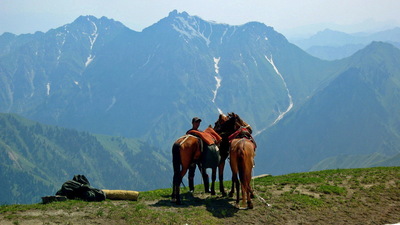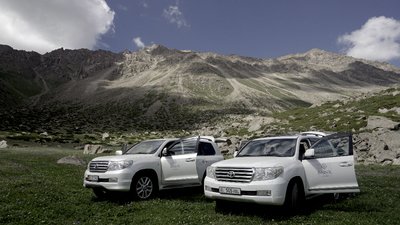Tash – Rabat caravan sarai
Our tours passing through Tash – Rabat caravan sarai
Baibol services
Tash Rabat is an amazing monument of medieval architecture of Central Asia, it is located in the heart of the Inner Tien Shan at an altitude of 3500 meters above sea level in the Kara-Koyun gorge (Black Sinus), surrounded by High snowy ridges. In II-IV centuries. Bc. The ancient caravan route passed through the Kara-Koyun canyon, which was part of the Great Silk Road and connected the valleys of Fergana and Chui with Kashgar.
From the Kyrgyz language Tash-Raba means "stone caravanserai", at the intersection of the Tien Shan it was the main parking for trade caravans going to China and back. It served not only as a place of refuge and rest for merchants and travelers, but also as a refuge from weather conditions and robbers who plundered caravans.
Among the architectural attractions of Kyrgyzstan, Tash-Rabat occupies a special place, as it is the most preserved caravan-saray along the entire Silk Road. The structure has not lost its original appearance and atmosphere of the early Middle Ages till our days. The road leading to Tash-Rabat is serpentinous and dirt, it departs from the international highway Bishkek-Naryn-Torugart-Kashgar and passes along the Tash-Rabat mountain river in the Kara Koyun gorge.
The whole image of Tash-Rabat shows that it was built according to the traditions of Central Asian architecture. The construction of the walls, towers and the entrance to the portal is typical of many medieval caravanserais. The uniqueness of Tash-Rabat is in that it is the only structure in the Central Asia has preserved, and it is entirely consists of rubble.
The ancient structure is allocated on the eastern slope of the mountain. The walls are constructed according to four world directions. The main facade is turned to east and ends on the hill. In the corners there are two towers, such as minarets. The entrance has a form a triumphal arch.
Tash-Rabat is a square building with sides 33.7 by 35.7 m, completely covered with a solid horizontal roof with a large spherical dome in the western part. The main hall from the entrance leads to a long corridor, which ends with a decorative arch.
The side corridors lead to small rooms, because of lack of windows, there is always dark. The entrance to the rooms is so low that you can only get there by strongly bending down, so these rooms are often compared to underground casemates. The dark atmosphere in the fortress is also because there was an underground prison called zindan, with the secret passages and exits.
First Tash Rabat was featured in the works of Mirza Muhammad Haydar in 16 century. He wrote that Tash Rabat belonged to caravanserais of the 15th century and was elevated by Mughal Khan, the ruler of Mogulistan. The first researcher of Tash-Rabat was the Kazakh scientist-educator C. Valikhanov, who visited the fortress in 1859. The scientist noted that the walls of the rooms had preserved some Arabic inscriptions. For kyrgyz people it is a sacred place, belonged to Bukharian ruler Abdullah-hahn.
You can also find some data about Tash Rabat in the works of such scholar-experts as A. Voitsekhovich, V. Bartold, N. Zeland, N. Pantusov. For example, the historian N. Pantusov, who visited the fortress in 1904, informs that, according to the Kyrgyz, Tash-Rabat was built by Abdullah Khan during a campaign against the Kalmyks and tells the legend of "aliens from Rome". That many years ago there was one outstanding man with his followers came from Rome. In a short time they built a stone fortress. Settled in it, they began to teach and treat the surrounding people. But suddenly he vanished. According to this story the historian N.Zeland wrote that the structure could belong to the Buddhist or Nestorian community, Pantusov assumed that the fortress had the meaning of a Christian monastery". Eventually this fact wasn't confirmed.
In 1940 Tash-Rabat was defined as a mosque and a stopping point of the trade route. In 1980, it is said that the building should be considered as a place of an ambassador’s relations of Timurid's state with China. The architectural and construction methods related to the architectural school of Samarkand of the XV century".
Thus, there were many hypotheses about the origin of this unique medieval monument, but the legend written by N. Pantusov is still popular among the Kyrgyz people, and it attracts numerous tourists.
You will be a lucky person if you can feel the whole east atmosphere when the traders, scientists, travelers and poets passed through this amazing caravan sarai.












